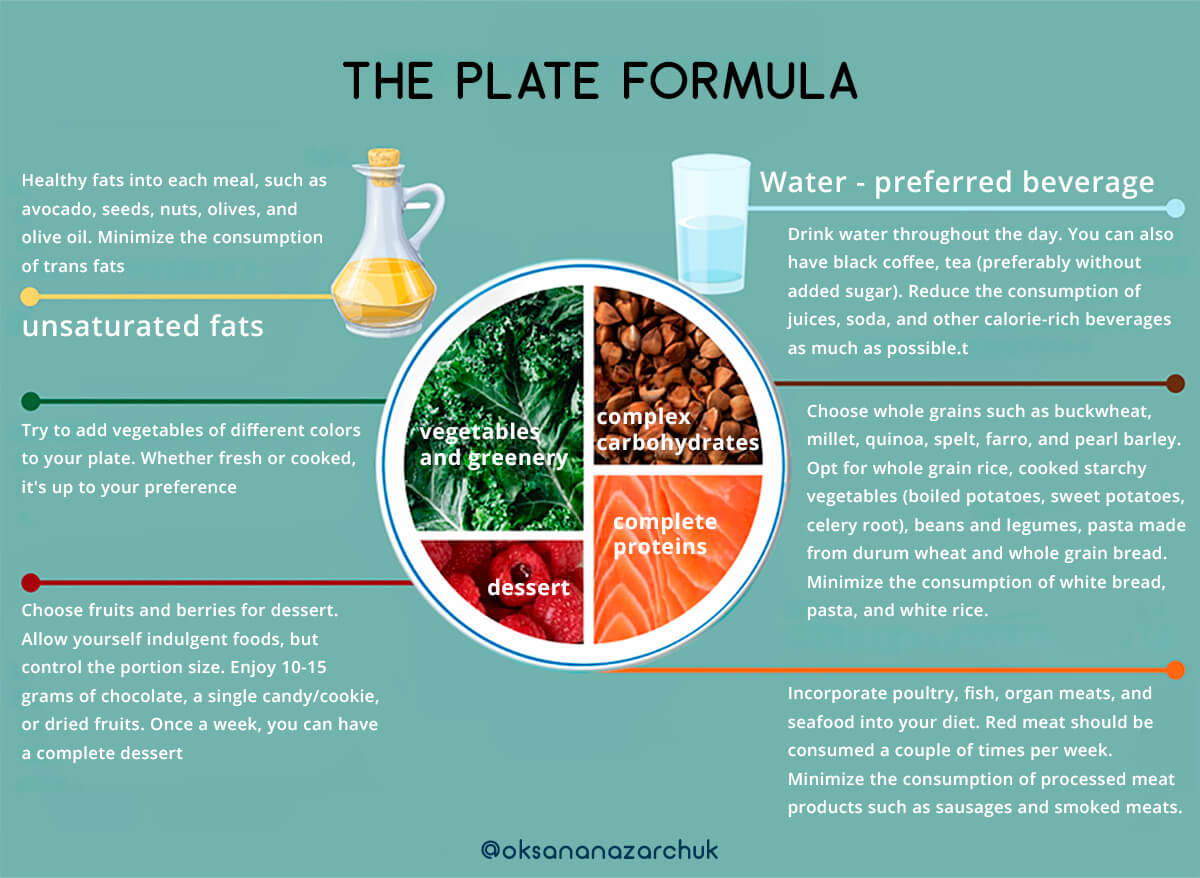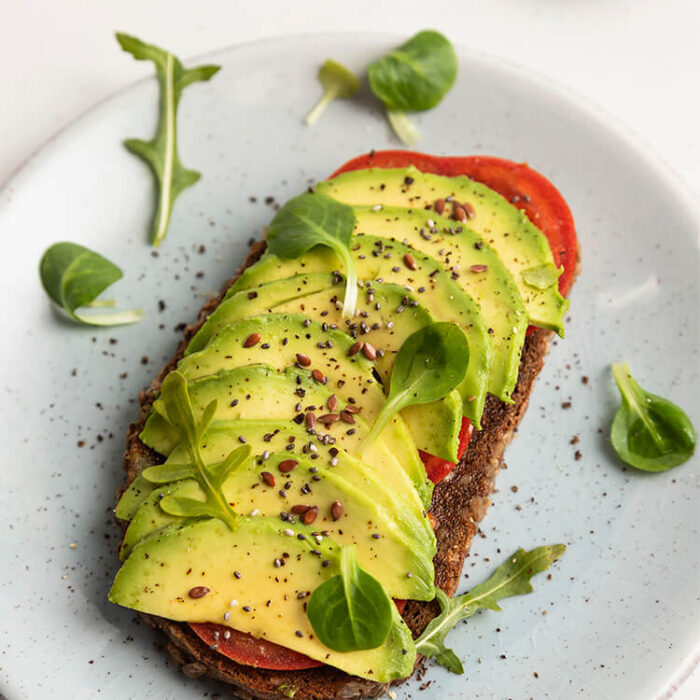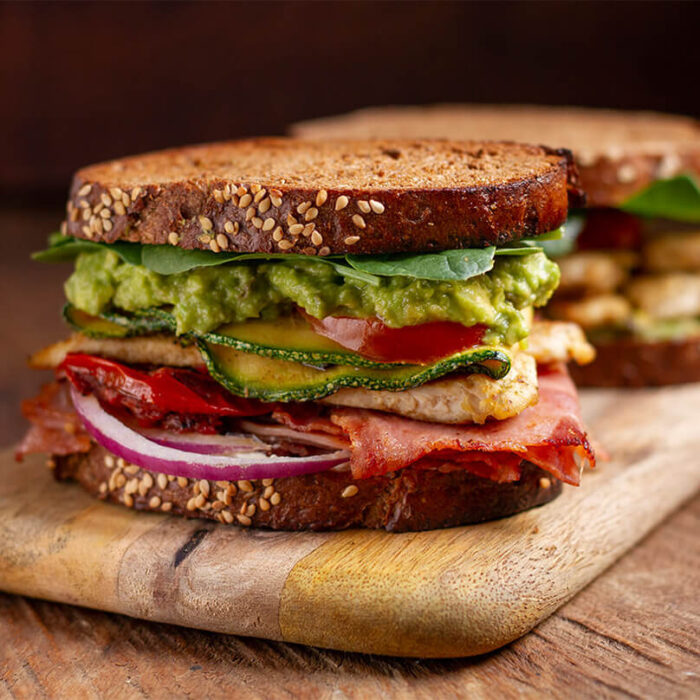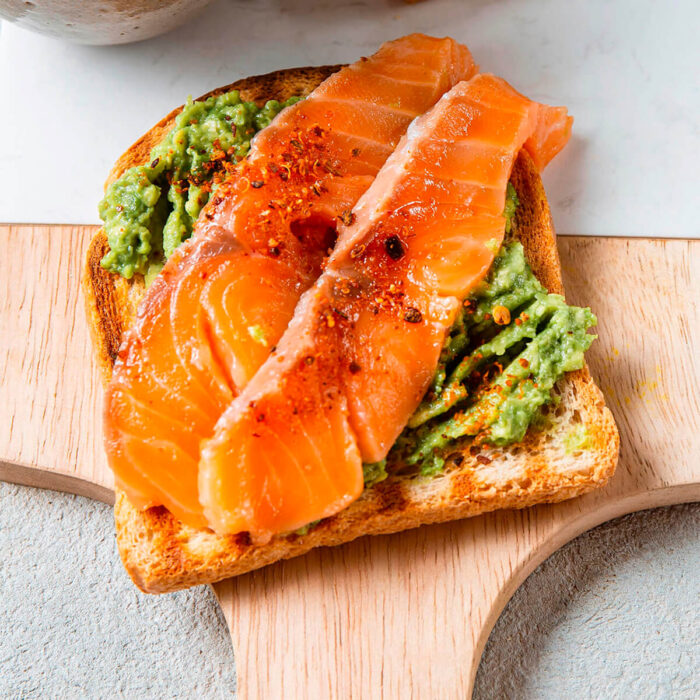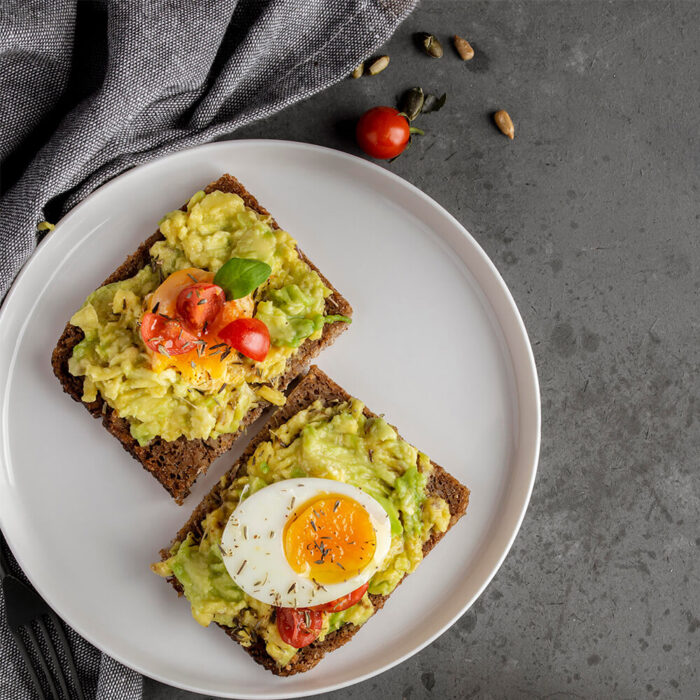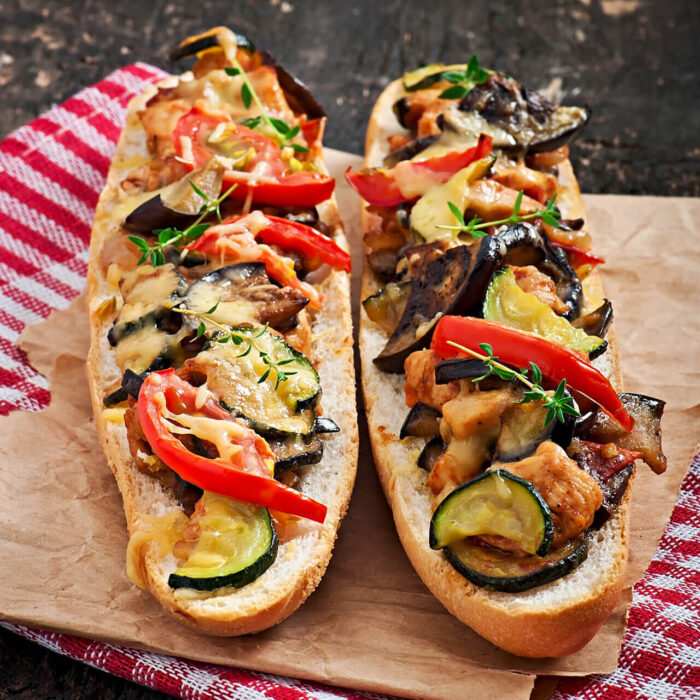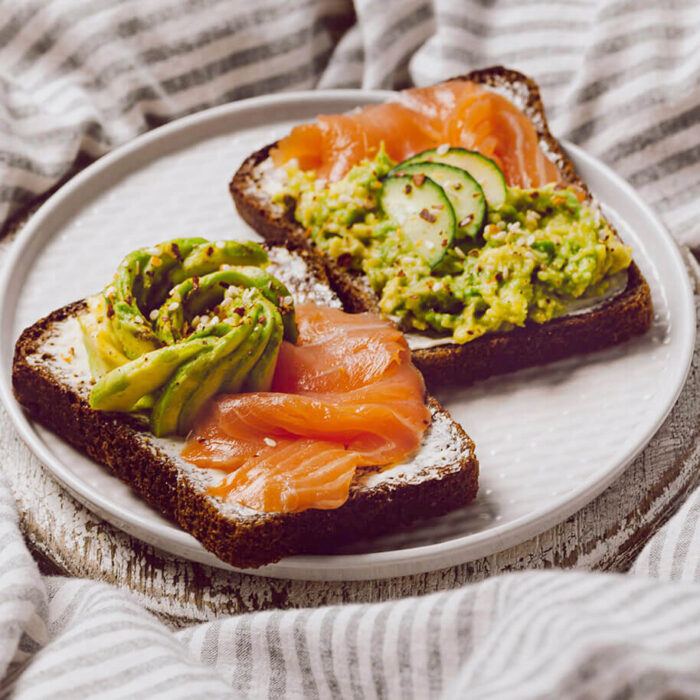Many people perceive a sandwich as an unhealthy dish, and the recipe is often limited to bread, sausage, and cheese. However, a sandwich can be part of a healthy diet and can often come to our rescue when we are on the road, traveling, or in need of a quick snack during a walk or hike.
I really enjoy applying the balanced plate rule in my work.
We can also apply it when assembling a sandwich.
So, a balanced plate includes: fiber (vegetables), protein, healthy fats, and carbohydrates.
What kind of sandwich shall we make?
1. COMPLEX CARBOHYDRATES
The issue of complex carbohydrates in a sandwich is easily solved – in the classic version, it’s bread, or you can experiment with tortillas, pita bread, or lavash. Choose any sourdough or yeast bread, preferably whole grain.
2. FIBER
Fiber means vegetables! Any vegetables of your choice. It can be greens, fresh or pickled cucumbers, carrots, tomatoes, sautéed spinach, roasted mushrooms, a medley of roasted vegetables with herbs and garlic, or roasted beets.
3. HEALTHY FATS
This can include guacamole or a simple avocado spread, pesto, olive oil, Greek yogurt with herbs, or any creamy cheese like cottage cheese or hummus.
4. PROTEIN
Choose roasted meat, poultry, cheese, egg salad or fish.
Examples:
– Toast, hummus, roasted mushrooms, chicken.
– Toast, olive oil, roasted minced eggplant, boiled tongue.
– Toast, tuna, Greek yogurt, mustard, green onions, dill, cucumber.
– Toast, avocado, roasted beets, boiled or roasted chicken.
– Toast, sautéed spinach with garlic, pesto, chicken meat.
– Toast, arugula, egg, cod liver.
– Toast, beet hummus, dill, herring.
Use the plate formula, experiment with fillings, and create a balanced sandwich for yourself and your family.
With care,
Oksana Nazarchuk

